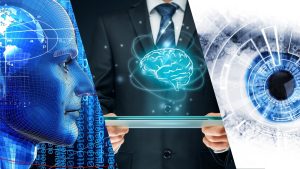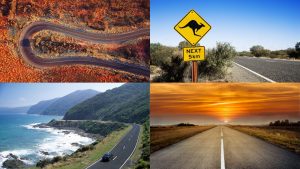Add Your Heading Text Here
From Anne Beadell Highway, Western Australia’s Anzac Highway to Arnhem Highway, Australia is like ‘the kingdom of highways’ due to their enthusiasm towards constructing new highways considering the ease of transportation for people.
However, highway construction is not something that we can not take lightly as it involves various aspects from design, and planning to assessing environmental impact etc.
This is when the employment of Light Detection and Ranging or LiDAR technology enters the scenario to save millions of dollars from interruptions and errors.
In this article, we will reveal how LiDAR technology has been employed in highway construction and its benefits.
Exploring LiDAR Technology

-
- This construction technology uses pulsed laser light to precisely scan surfaces, capture comprehensive topographical data, and map terrain characteristics. It also uses lasers to calculate distances and generate exact 3D models of landscapes or buildings.
- LiDAR helps with site surveying in the construction industry and it also provides high-resolution elevation maps for accurate land evaluation and helps architects and engineers plan projects by giving them extensive information about the topography and existing buildings.
- This technology helps the rapid pace of design processes, assists in visualising projects, and helps identify possible risks or barriers.
- In other words, this can be known as a speedy generation of precise data that increases overall construction efficiency and safety, lowers mistakes, and strengthens project planning.
- If we fly back to the history of the latter, this is not a new invention as it goes to the 1980s and it has been in the spotlight as a useful tool for providing accurate geospatial measurements since then.
The Benefits of LiDAR Technology in Highway Construction

Enhanced Safety
LiDAR technology significantly enhances safety in highway construction by offering detailed and accurate data that aids in identifying potential hazards and obstacles along the proposed routes.
Its precise scanning capabilities detect minute variations in terrain, pinpointing natural or man-made obstructions, such as trees, utility poles, or structures.
This comprehensive mapping helps in proactive planning and designing, allowing engineers to strategise and implement necessary safety measures to mitigate risks.
This is quite helpful in identifying and addressing potential safety hazards early in the planning phase, as it minimises the likelihood of accidents during construction and subsequent operation of the highways.
The power does not end there as this technology ensures a safer environment for both construction workers and future highway users, contributing to overall project success and road safety in Australia.
Efficient Planning
The latter revolutionises efficient planning in highway construction by providing highly accurate and detailed topographical data.
This precise mapping clears the road for engineers and planners to conveniently assess terrain features, optimising route selection and alignment.
With comprehensive elevation models and terrain information at hand, designers can make informed decisions regarding road gradients, curves, and alignments, ensuring optimal highway design.
As it is empowered by the ability to visualise the landscape in detail and streamline the planning phase, it can expedite decision-making and reduce the need for redesign due to unforeseen challenges.
As it is evident, LiDAR’s contribution to efficient planning minimises project delays, optimises resource allocation, and lays the groundwork for constructing highways that are well-suited to the natural landscape, while enhancing both functionality and safety.
Accurate Surveying
It offers an unparalleled level of accuracy in surveying for highway constructions by capturing highly precise and detailed topographic data.
With its ability to rapidly scan and map terrain, LiDAR provides engineers and surveyors with comprehensive elevation models that aid in thorough site assessments.
This accurate data facilitates a thorough understanding of the landscape, including existing structures, vegetation, and terrain features, crucial for effective highway design.
As it has the capacity to generate some detailed 3D maps, LiDAR en precise measurement of distances and elevations, minimising errors in surveying.
This accuracy streamlines the initial surveying phases, allowing for precise calculations and informed decision-making, ultimately laying the groundwork for successful and well-planned highway construction projects.
Reduced Errors
This reduces errors in highway construction by providing comprehensive and accurate data, minimising uncertainties in design and planning. Through its precise scanning capabilities, LiDAR easily captures detailed terrain information, offering engineers and planners a clear understanding of the landscape.
This thorough data helps with a thorough assessment of existing conditions, reducing the likelihood of oversight or miscalculation during design phases.
LiDAR reduces mistakes in highway path selection, alignment, and grading plans by getting rid of terrain assessment flaws like missing obstructions or inaccurate elevation estimations.
This precision enhances the overall accuracy of the project and it decreases the chances of costly redesigns or construction delays while ensuring efficient and error-free execution of highway construction projects.
Cost Savings
This offers substantial cost savings by optimising various project phases and its ability to provide detailed and accurate topographic data minimises unforeseen challenges during the planning and design stages.
This comprehensive information aids in efficient decision-making, reducing the need for redesigns or alterations due to overlooked terrain complexities.
LiDAR reduces the possibility of mistakes during the initial planning and surveying stages, which lowers the cost of construction rework and related expenses.
Its capacity to anticipate hazards or barriers also helps in the planning of reasonably priced mitigation measures.
Ultimately, the precision and foresight provided by LiDAR technology contribute significantly to minimising project expenses, ensuring efficient resource utilisation, and enhancing the overall cost-effectiveness of highway construction projects.
Improved Visualisation
LiDAR technology in highway construction revolutionises visualisation by generating detailed 3D models of landscapes and structures and those intricate models offer a comprehensive representation of the terrain, aiding engineers and stakeholders in envisioning the completed highway project as we mentioned above.
Further proceeding would not be difficult for the engineers as it provides a visual representation of the proposed construction in its environment and enhances project communication and stakeholder engagement.
The 3D models enable better comprehension of the highway’s layout, facilitating discussions and decisions among project teams and stakeholders.
This ability to clearly visualise ideas helps to communicate complex concepts, prospective difficulties, and suggested solutions among the responsible parties. Ultimately, it helps with improved understanding, collaboration, and informed decision-making throughout the entire highway construction project lifecycle.
Environmental Impact Assessment
The precise 3D models created by LiDAR enable engineers and environmental experts to analyse terrain features, vegetation, and ecosystems along the proposed highway route.
This aids in identifying sensitive areas, habitats, or ecological zones that can be affected by construction, allowing for proactive planning to mitigate potential environmental disruptions.
Through its comprehensive data and visualisation capabilities, LiDAR ensures a thorough understanding of the project’s environmental implications, facilitating informed decision-making to minimise adverse effects and ensure environmentally responsible highway construction practices.
Maintenance Planning
LiDAR technology contributes significantly to maintenance planning in highway construction by providing detailed and accurate data for ongoing infrastructure management as the latter aids in monitoring road conditions post-construction.
When regularly capturing high-resolution data of the highway and its surroundings, this technology helps with continuous assessment of wear, tear, or potential damage to the infrastructure.
This data-driven approach enables proactive maintenance planning, allowing authorities to prioritise repairs or enhancements based on accurate assessments of deterioration or changing landscape features.
Creating a Lasting Impact Strategically

The amount of money and resources you have to spend on these heavy infrastructure projects are immense and you expect a great impact by investing in them. Technology like LiDAR is the best possible way if you are trying to optimise the overall quality of your projects. However, a little research before purchasing any software is highly advisable.







